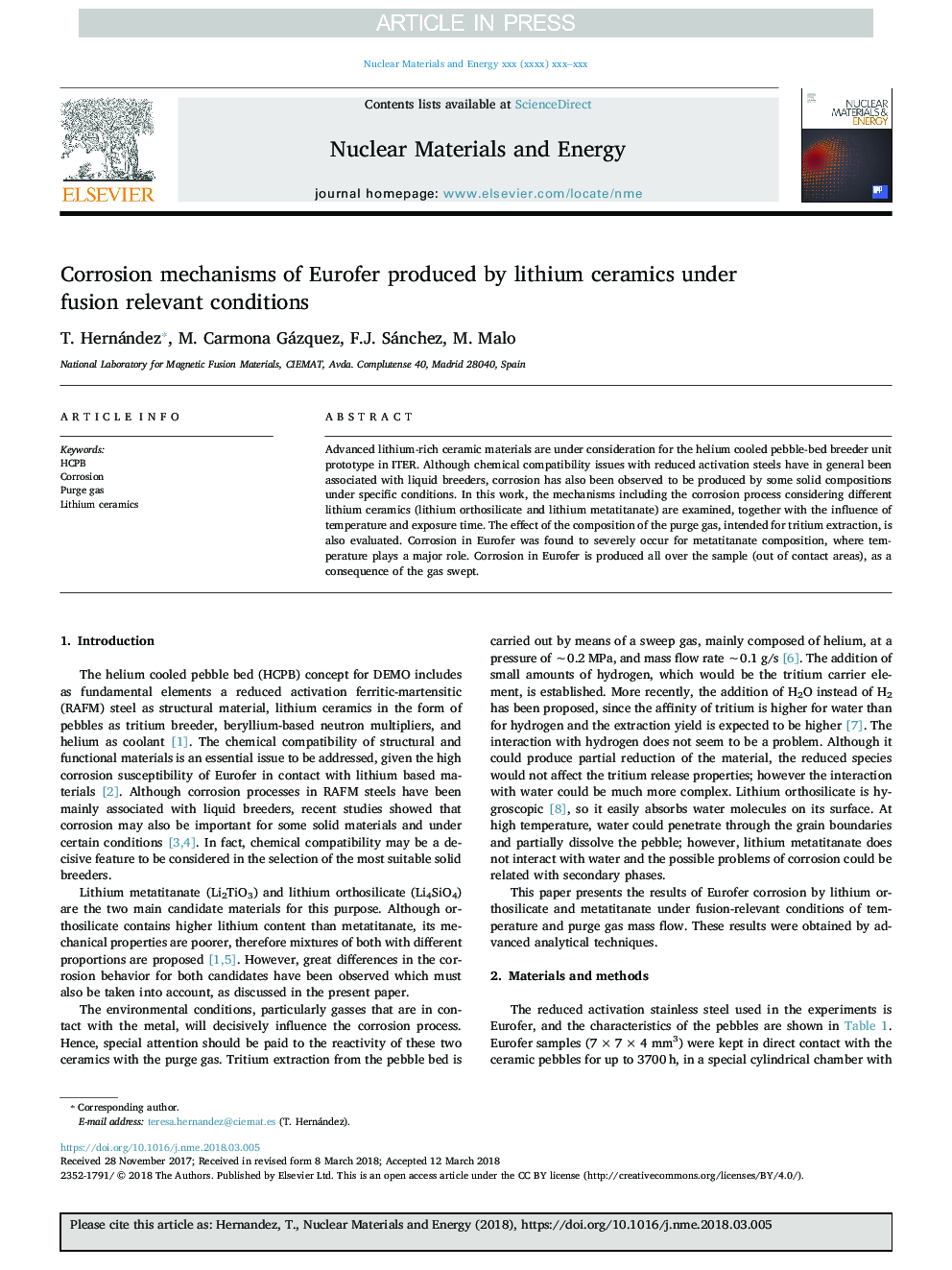| Article ID | Journal | Published Year | Pages | File Type |
|---|---|---|---|---|
| 7987303 | Nuclear Materials and Energy | 2018 | 5 Pages |
Abstract
Advanced lithium-rich ceramic materials are under consideration for the helium cooled pebble-bed breeder unit prototype in ITER. Although chemical compatibility issues with reduced activation steels have in general been associated with liquid breeders, corrosion has also been observed to be produced by some solid compositions under specific conditions. In this work, the mechanisms including the corrosion process considering different lithium ceramics (lithium orthosilicate and lithium metatitanate) are examined, together with the influence of temperature and exposure time. The effect of the composition of the purge gas, intended for tritium extraction, is also evaluated. Corrosion in Eurofer was found to severely occur for metatitanate composition, where temperature plays a major role. Corrosion in Eurofer is produced all over the sample (out of contact areas), as a consequence of the gas swept.
Related Topics
Physical Sciences and Engineering
Energy
Nuclear Energy and Engineering
Authors
T. Hernández, M. Carmona Gázquez, F.J. Sánchez, M. Malo,
